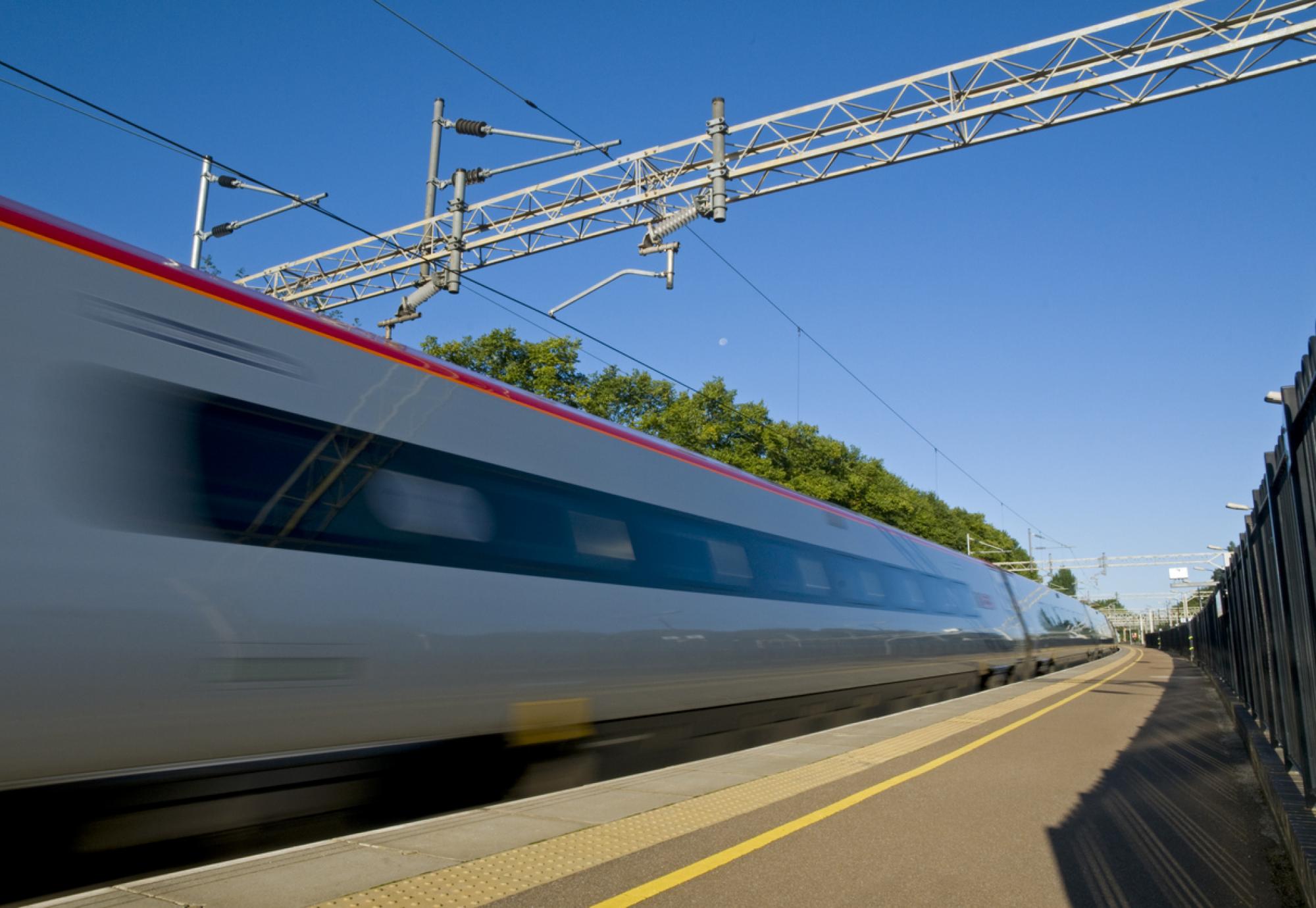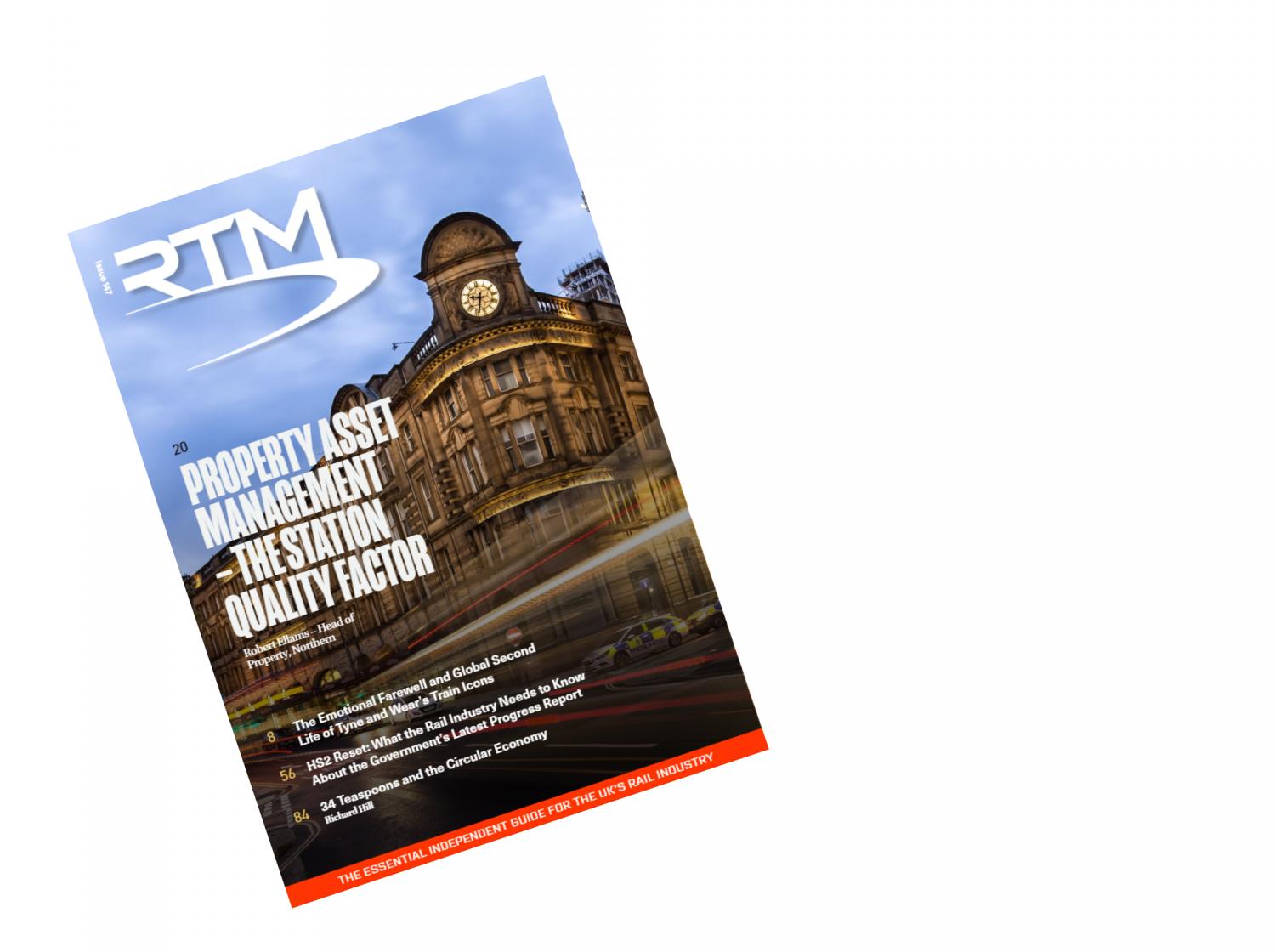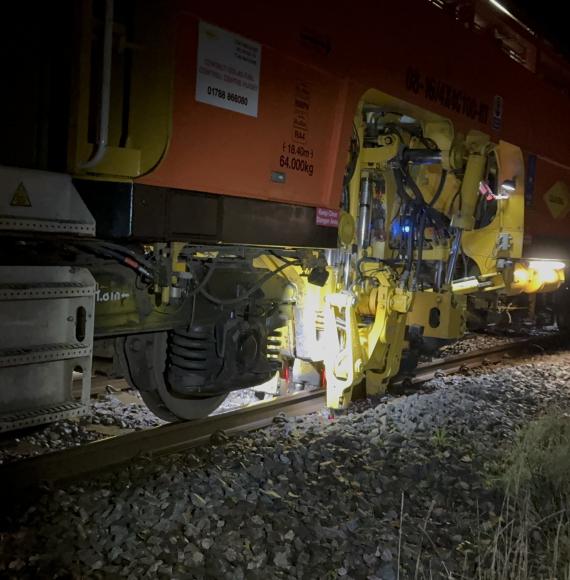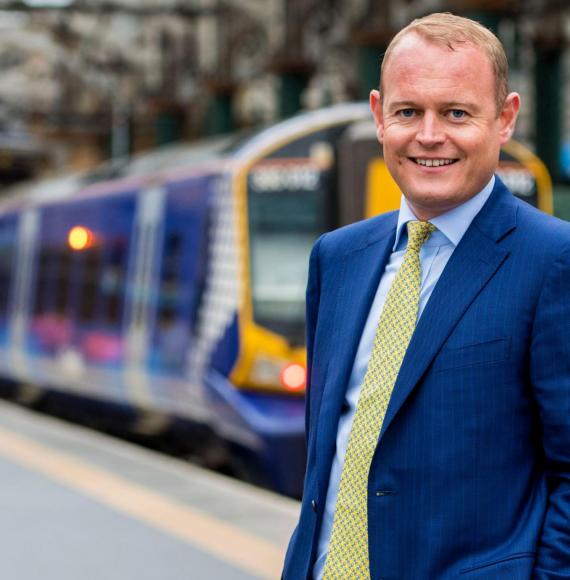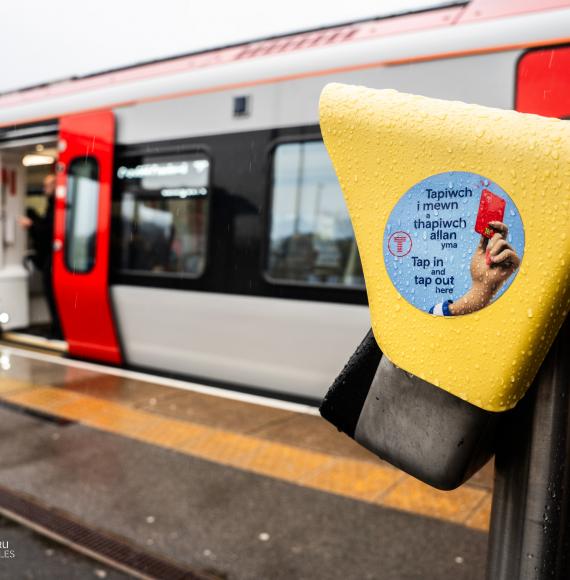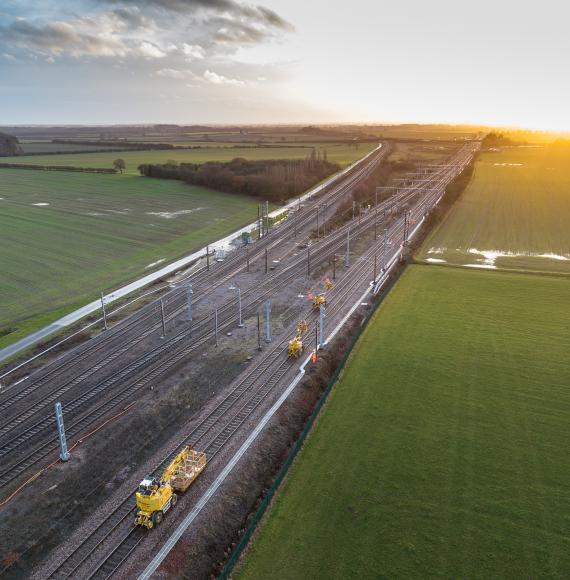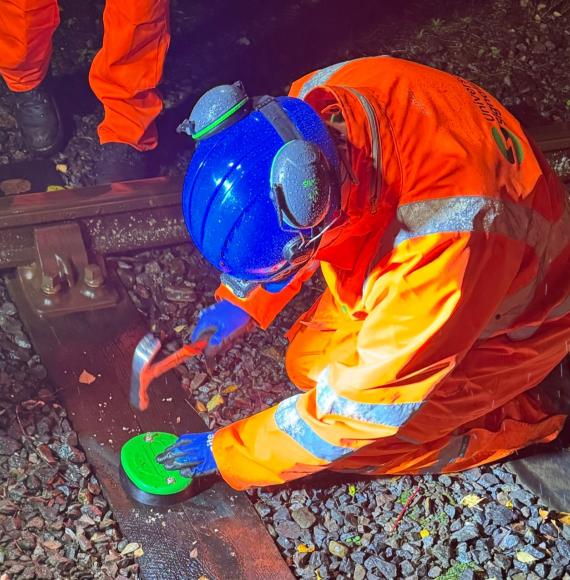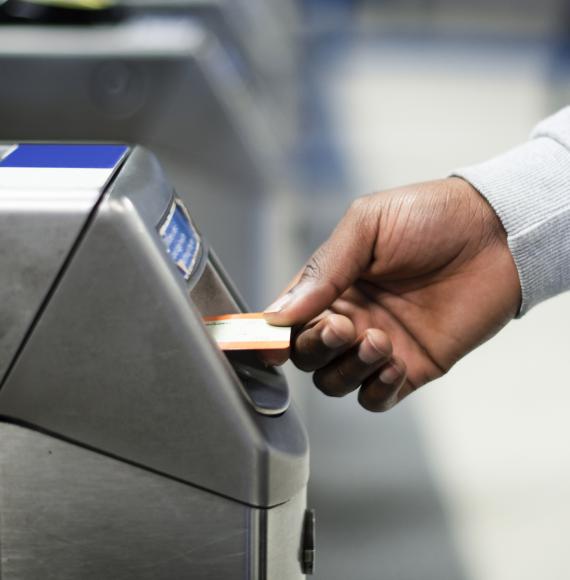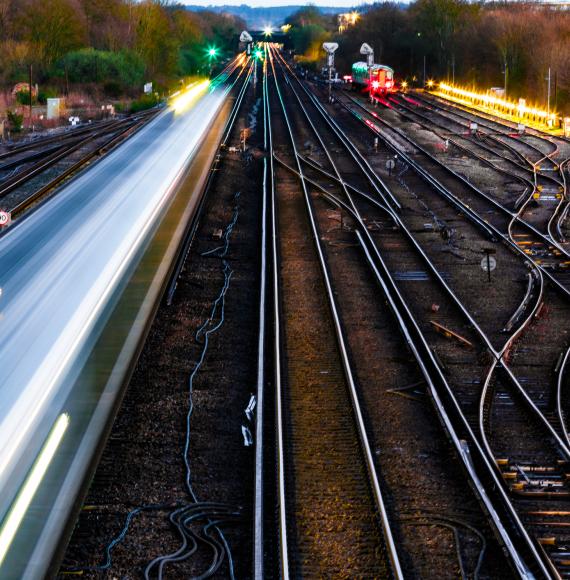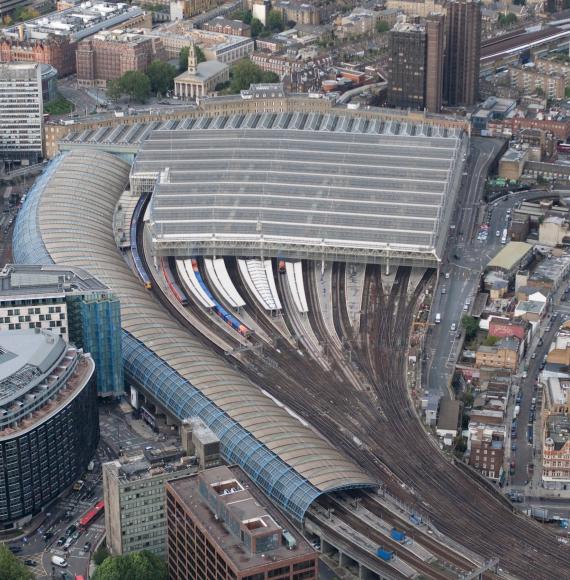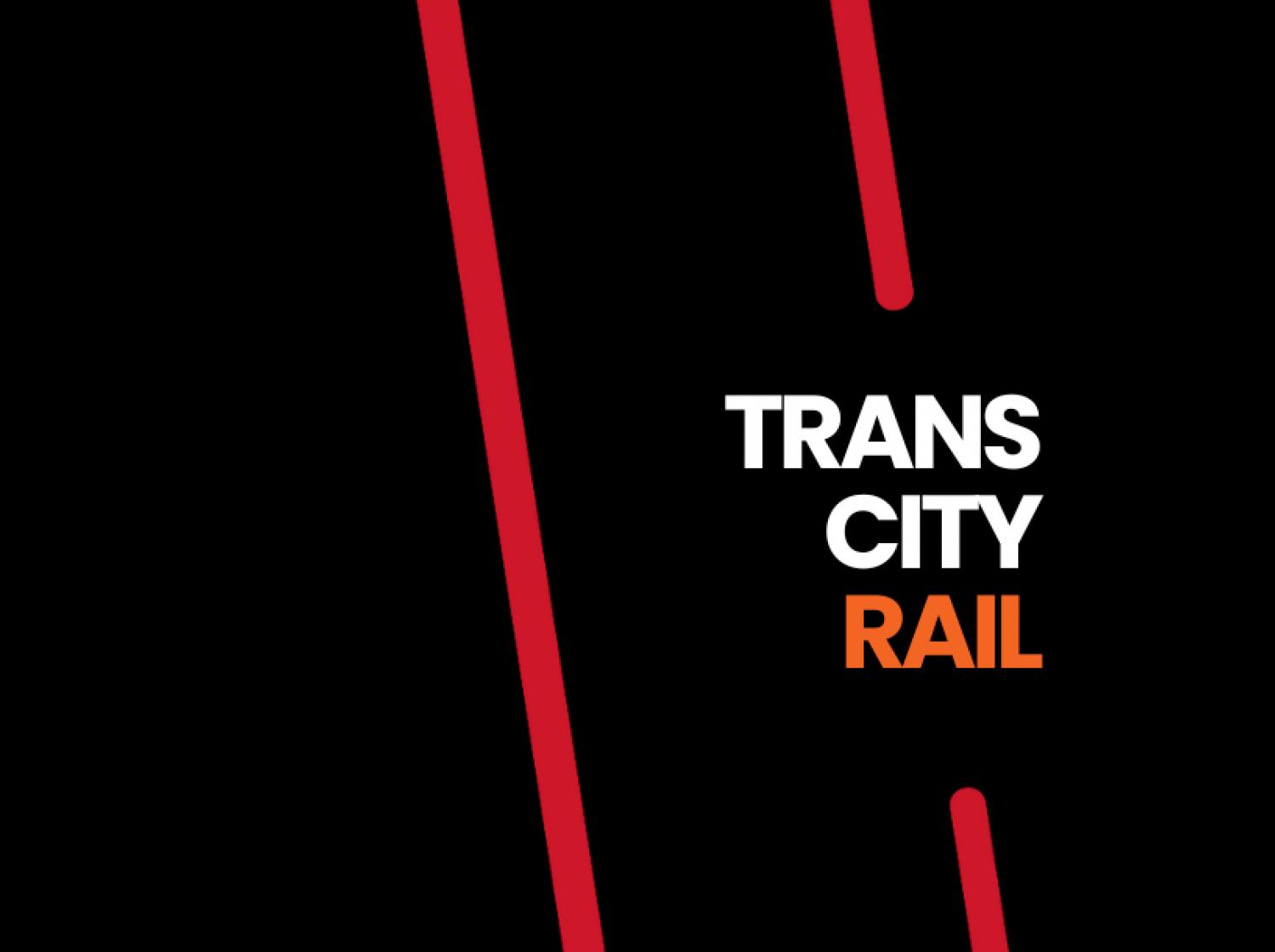The Railway Industry Association (RIA) has today published a new strategy for a lower cost, higher performing net zero railway.
The pathway maximises current Government infrastructure plans and sets out a coordinated “track and train” approach to deliver improved outcomes for passenger and freight users, taxpayers and the supply chain.
The blueprint also demonstrates how making rolling stock procurement decisions now could avert the present threat to UK rolling stock manufacturing capability.
RIA’s strategy fast tracks benefits by maximising opportunities in the short-term for carbon reduction and air quality improvements. It will also enhance performance by introducing newer and more reliable trains while bringing costs down and achieving greater economic benefits by reducing “boom and bust” for the rail supply sector.
The strategy highlights several key findings:
- Current Government plans are to increase the proportion of electrified rail on the UK network from 38% to 51%. RIA has identified a further 15% of routes which, if electrified, would incrementally decarbonise 100% of passenger services and 95% of freight services.
- Around a third of the UK’s rail network does not need to be electrified and can be decarbonised with battery trains.
- Uncertainty surrounding future UK manufacturing capacity demonstrates the need for a more consistent pipeline of work for infrastructure and rolling stock suppliers.
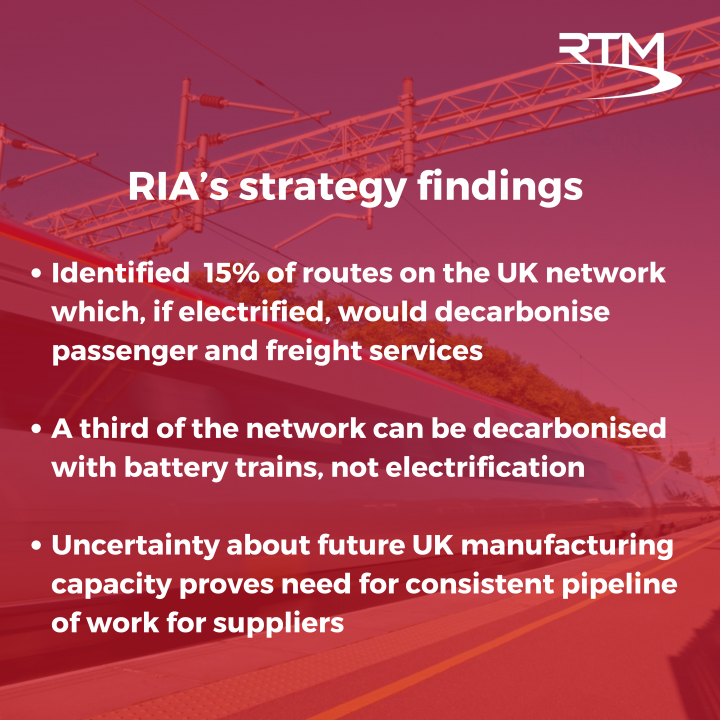
David Clarke, Technical Director at RIA, said: “Our analysis provides an ‘art of the possible’ strategy for the Government and the railway industry.
“Ordering a fleet of battery-electric trains, a strategic and a consistent approach to electrification and quick green wins on less intensively used routes can all help achieve a more efficient and low-carbon railway by 2050.
“It is vital that the Government now makes some decisions on infrastructure and rolling stock which will enable investors, rail planners and suppliers, as well as the wider rail economy, to deliver a better and more sustainable railway for passengers and taxpayers in the future.”
Image credit: iStock

